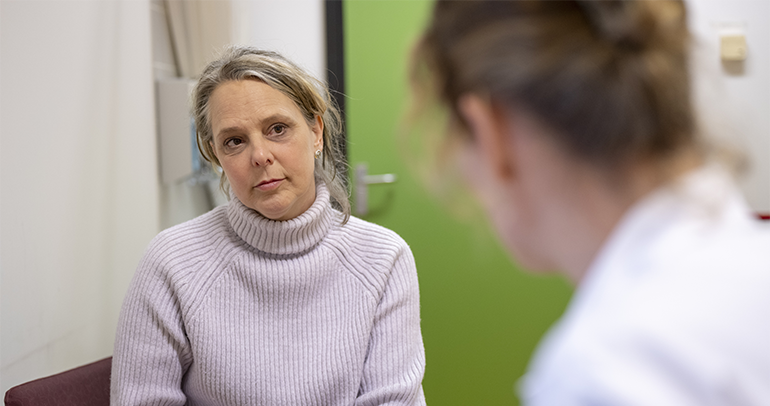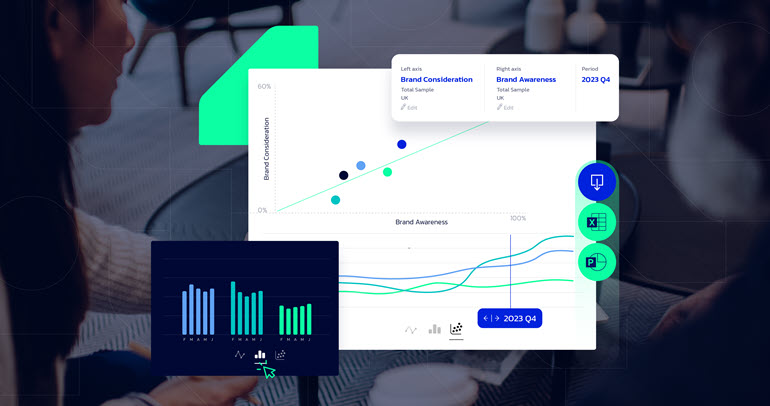
For too long, women’s health has been treated as a specialty subset of healthcare. But that view is rapidly shifting. The reality is women’s health is everyone’s health. It influences families, communities, economies, and nearly every category of care.
Yet, major gaps in women’s healthcare persist. As someone who has experienced firsthand how women’s health concerns can be misunderstood, minimized, or simply not explored as fully as they deserve to be, I’ve grown increasingly passionate about the broader conversation around women’s healthcare. That quiet realization, shared by many, has deepened my interest in how care is delivered, how it’s evolving, and where there’s still room to grow.
Indeed, at Escalent Group (Escalent, C Space, and Hall & Partners), we are seeing the need for pharmaceutical manufacturers to evolve the lens through which they consider women’s unique health needs.
The following data points reveal just how critical and urgent that work continues to be:
- Clinical trials in the U.S. were not required to include women until 1993. That means decades of treatments, dosages, and protocols were developed without accounting for the biological and hormonal differences that define more than half of the population. The ripple effects are still felt today, in areas like cardiovascular health, drug efficacy, and pain management.
- Women are 50% more likely than men to receive an incorrect diagnosis after a heart attack. Heart disease is the leading cause of death for women, but symptoms often present differently than in men, with more nausea, fatigue, or jaw pain than chest-clutching agony. Yet, diagnostic systems and training are still largely based on male-centric models, showing that the bias isn’t just theoretical, it affects life-and-death outcomes. It also challenges the assumption that gender-neutral care is equitable care.
- In 2022, the maternal mortality rate for Black women in the U.S. was 49.5 deaths per 100,000 live births, significantly higher than the rates for White (19.0), Hispanic (16.9), and Asian (13.2) women. It’s crucial to consider intersectionality—the way overlapping identities like race, gender, and socioeconomic status combine to shape lived experiences and outcomes.
- Fewer than 1 in 5 U.S. OB-GYN residency programs offer any formal training in menopause care. A national survey of OB-GYN residency programs found that only 20% offered a dedicated menopause curriculum, and just 7% of residents reported feeling adequately prepared to manage care for menopausal women. While most people assume that OB-GYNs are experts in all stages of a woman’s reproductive health, the reality is that most receive little to no structured education on a transition that affects every woman and can span nearly half her life when both symptomatic phases of perimenopause and menopause are considered.
The Cost of Overlooking Women’s Health in Research
One of the most consequential examples of systemic gaps in women’s healthcare is the Women’s Health Initiative (WHI) hormone therapy study from the early 2000s. Launched with the goal of understanding the risks and benefits of hormone replacement therapy (HRT) for postmenopausal women, the WHI made headlines when preliminary results suggested a link between hormone therapy and breast cancer.
The media coverage was swift and severe. Millions of women discontinued treatment. Providers stopped prescribing it. And menopause care, already underemphasized, took a massive step backward.
But there was a catch.
Subsequent analysis revealed that the initial interpretation had serious flaws. The average age of women in the study was 63, more than a decade past the typical onset of menopause. The increased breast cancer risk, while statistically significant, translated to a very small absolute risk. And differences in hormone type, dosage, delivery method, and timing were not adequately accounted for.
The result? Nearly a generation of women endured unnecessary suffering, while fear and misinformation dominated clinical conversations.
This is a cautionary tale, but also an opportunity. It underscores the need for gender-inclusive healthcare market research that designs studies that reflect real-world patient populations. To communicate findings with clarity and nuance. And above all, to listen more deeply to the lived experiences of women.
The Market for Women’s Health Is Ready—and Demanding More
The good news is that momentum is building in women-centered healthcare innovation. The rise of femtech, growing investments in women-led health startups, and increased public awareness have put women’s health in the spotlight. But this isn’t just a cause, it’s a commercial opportunity to reimagine women’s health.
For pharma, biotech, and med device companies, this is a clear invitation: integrate the female perspective more meaningfully into research and development, clinical trial design, patient engagement strategies, and go-to-market planning. Gender-inclusive market research isn’t just about representation; it’s about relevance, trust, and ultimately, better outcomes.
The potential for growth for healthcare and life sciences companies is significant:
- The global women’s health market is projected to reach $67 billion by 2030.
- Midlife women, often the stewards of healthcare decisions for entire families, are seeking solutions that reflect their complexity and intelligence.
- Consumers are increasingly vocal about what they will and won’t accept when it comes to care. Fueled by high-profile advocates like Jen Gunter (author of The Menopause Manifesto), Michelle Obama (who has spoken openly about menopause and the need for better education), and Dr. Mary Claire Haver (OB-GYN and founder of The Galveston Diet, who is working to shift the conversation around midlife women’s health through education and evidence-based lifestyle guidance), their voices – and the communities they’ve sparked – are pushing the conversation forward and demanding more from the healthcare system.
Turning Insight into Action: Advancing Women-Centered Healthcare Innovation
At Escalent, we partner with healthcare organizations across sectors—from pharma and med tech to digital health and wellness—to help them better understand and serve women in all their complexity. We don’t just look at the data; we uncover the stories behind it and help those stories live on within our clients’ organizations with engaging outputs and story-led reporting.
Through qualitative and quantitative research, advisory support, and strategic consulting, we guide our clients toward insight-driven innovation.
Whether it’s shaping a go-to-market strategy for a new women’s health product, exploring how gender influences device usage and perception, or helping a clinical team understand how communication styles impact patient trust, we help our partners ask better questions and get actionable answers.
And for those who haven’t yet considered women’s health a core part of their roadmap, we offer a path forward. One rooted in empathy, insight, and opportunity.
Women’s health should not be an afterthought. And it’s certainly not “just” a reproductive issue. It’s a powerful lens through which we can build a better, more equitable healthcare system for everyone.
If you’re rethinking how your organization approaches women’s health (or realizing it’s time to start), now is the moment to act. The opportunity is too big, the need too urgent, and the insight too rich to ignore. Let’s uncover what women really need, expect, and experience, and use those truths to fuel smarter innovation and more meaningful impact.
Want to learn more? Let’s connect.










